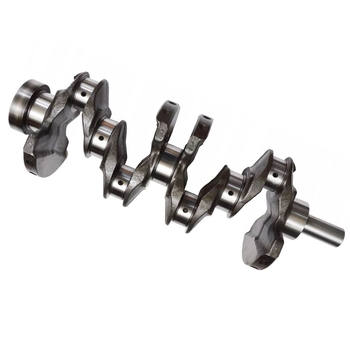Introduction
The crankshaft, a critical component in internal combustion engines, has come a long way since its inception. Over the years, engineers have introduced numerous improvements to enhance performance, durability, and efficiency. In this article, we'll explore the top 10 crankshaft innovations that left an indelible mark on the automotive industry.
1. Counterweights: Balancing Act
First up is the introduction of counterweights. In my experience, many people overlook the importance of balance in an engine. However, counterweights play a significant role in reducing vibrations, ensuring smoother operation, and minimizing wear and tear. By adding counterweights to crankshafts, engineers managed to tackle one of the most common issues plaguing early engines.
The Role of Counterweights
Counterweights are strategically placed on crankshafts to counterbalance the reciprocating mass of the piston and connecting rod assembly. They help maintain rotational stability, allowing for higher engine speeds and increased power output. As it turns out, balance is key to unlocking an engine's full potential.
2. Forged Crankshafts: Strength and Durability
Forged crankshafts are another game-changer in the world of automotive engineering. Manufactured using high-pressure dies, these crankshafts offer superior strength and durability compared to their cast counterparts. This innovation was particularly crucial for high-performance engines, which demand exceptional reliability under extreme conditions.
3. Journal Bearings: Reducing Friction
Have you ever wondered how engineers minimize friction in engines? Journal bearings, also known as main bearings or plain bearings, are the answer. These components provide a smooth, low-friction surface for the crankshaft to rotate, significantly reducing wear and improving engine efficiency.
Materials and Design
The choice of materials and design plays a vital role in the performance of journal bearings. Engineers have developed various bearing materials, such as babbitt, copper-lead, and aluminum-tin, each with its unique properties and advantages. Additionally, advancements in bearing design, like hydrodynamic and rolling element bearings, have contributed to reduced friction and increased longevity.
4. Cross-Drilled Crankshafts: Enhanced Cooling
Effective cooling is essential for optimal engine performance, and cross-drilled crankshafts have emerged as an innovative solution. By drilling holes through the crankshaft, engineers facilitate the circulation of oil, which helps dissipate heat and maintain consistent temperatures. This design improvement has proven particularly beneficial for high-performance engines that generate substantial amounts of heat.
5. Integrated Balance Shafts: Smoothing Out Vibrations
Vibrations can negatively impact engine performance and longevity. To address this issue, engineers introduced integrated balance shafts. These shafts, located within the engine block, rotate in opposite directions to the crankshaft, effectively canceling out vibrations. The result is a smoother, more refined engine operation.
Practical Application: Harnessing Crankshaft Innovations
Now that we've explored some of the most impactful crankshaft innovations, let's discuss how you can benefit from these advancements:
Conclusion
Crankshaft technology has undeniably revolutionized the automotive industry, enabling engines to deliver unprecedented power, efficiency, and durability. By staying informed about the latest innovations and applying them to your vehicles, you can unlock new levels of performance and enjoy a smoother, more reliable driving experience.




